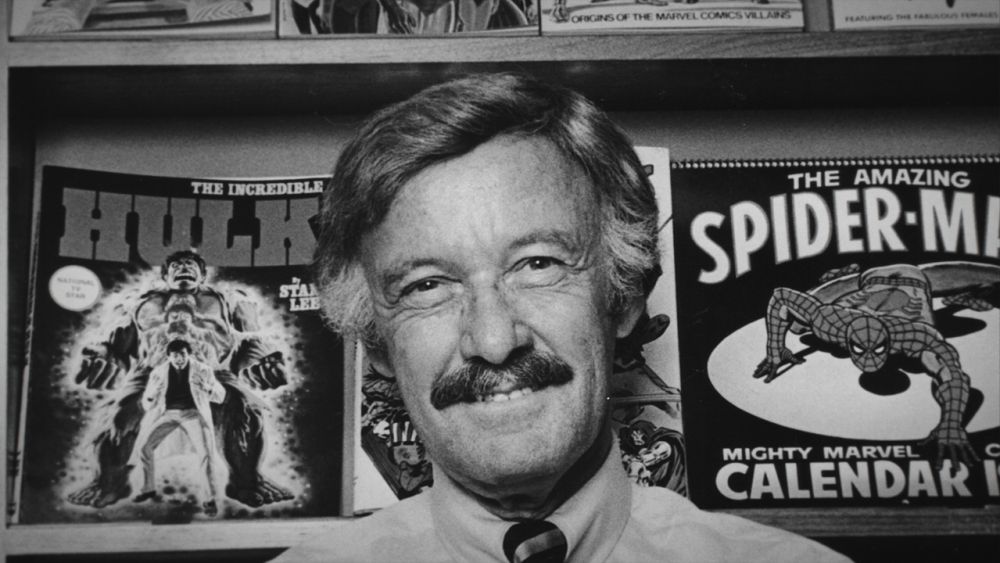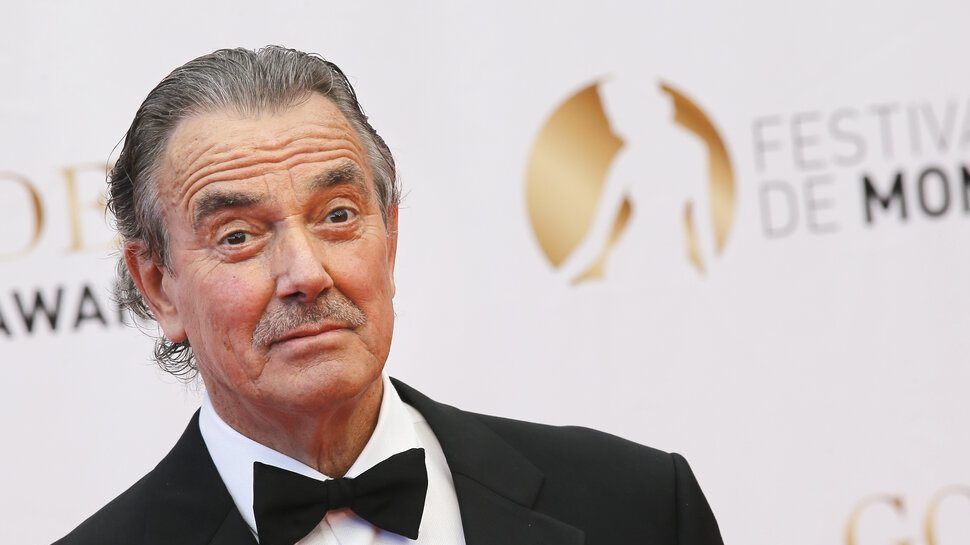'Stan Lee' Review: A Tasty Documentary About the Visionary of Marvel
There’s a moment in “Stan Lee,” David Gelb’s lively and illuminating documentary about the visionary of Marvel Comics, that’s momentous enough to give you a tingle. The year is 1961, and Lee, approaching 40, is burnt out on comics. It’s a form he has never taken all that seriously, even though he’s been working at it since 1939, when he started, at 17, as a gofer for Timely Comics. (Within two years he’d become the company’s editor, art director, and chief writer.) The comics he creates get so little respect that he tries to hide his profession when asked about it at cocktail parties.
In 1961, though, Lee receives a directive from Martin Goodman, the publisher of the company that’s about to be renamed Marvel. He is ordered to devise a team of superheroes that can compete with DC’s Justice League (who have become the fulcrum of the so-called Silver Age of Comics). Lee, weary of superheroes, is ready to quit the business. But his wife, the English-born beauty Joan Lee, suggests that he create the kind of characters he has always been talking about — a more realistic brand of comic-book figure, one that ordinary people could relate to.
With nothing to lose, he comes up with the Fantastic Four as a new breed of superhero: characters with a dash of angst and a host of ordinary problems — they bicker and nurse their anger and anxiety, they worry about things like paying the rent, and in the case of The Thing that have some serious self-esteem issues. The comic-book historian Peter Sanderson has made the brilliant analogy that DC, with the Justice League and the Flash, was like the major Hollywood studios and that the Marvel Comics that Stan Lee was inventing were like the French New Wave: the kickoff of a reality-based revolution in comics.
And here’s when the tingle arrives. Marvel was churning out product, sometimes two comic books a day, so there wasn’t much time to indulge in the creative process. Lee, writing the Fantastic Four, would come up with a storyline, which might be just an abstract story concept; he’d then hand it off to the illustrator, Jack Kirby, who created panels that advanced the story in his own way. Only after the art was completed would Lee write the words, laying it into dialogue bubbles. This became known as the Marvel Method.
But what you see in “Stan Lee” is that this was a “method” rooted in make-it-up-as-you-go-along randomness. The stories weren’t planned out or meticulously executed; they were basically improvised. And that, it turns out, was their glory. The stories had a casual existential kick (the New Wave element). Their scruffy human spirit was embodied in the very way that they’d been created. What Lee brought to the equation was a desire to see heroes who were just like us, as well as monsters and villains who weren’t so one-dimensional that you couldn’t empathize with them. The Incredible Hulk, launched just after the Fantastic Four, was a character conceived in the spirit of Boris Karloff in “Frankenstein”: a totemic ghoul of mystery you weirdly cared about.
“Stan Lee” is a fan-service documentary released by Disney+ (it drops on June 16), yet it’s very well-made, and watching it you’re confronted with a revelation: that the comic books that Lee began to create in 1961 didn’t just mark a seismic break with the comic books of the past. Their thorny flawed catch-as-catch-can humanity now stands in stark contrast to the majority of movies that have been spun off from comic books over the last 40 years.
All those blockbusters — the films that didn’t just steamroll Hollywood but remade American culture — are endlessly “relatable,” in the way the heroes surf along on market-tested arcs of aspiration and speak with the cynical japery that’s the language of the American Entertainment State. But Lee’s dream of superheroes who are just like us? That lives vastly more in the comics than it does in the movies. And in that sense, every time you ever saw Stan Lee (who died in 2018) doing a cameo in a Marvel movie, he was lending his cred to a pop-culture form that owed much of its existence to him yet violated, on some level, the spirit he stood for.
I’m not accusing him of selling out. Lee, who became a comic-book-world celebrity in the ’70s, had every right to coast on the iconic quality that Marvel had achieved. And he was, of course, an ebullient spokesman. Watching “Stan Lee,” it’s fun to see how his image evolved. The film opens with a clip of him from what looks like the late ’50s, when he was an important figure but not yet a marquee name. Without the mustache, and without the hair pieces and extensions that gave him, in later life, that weird used-car-salesman-as-icon-of-cool cachet, he comes off as a rather ordinary fellow, like a high-school science teacher with a trace of Gene Kelly’s verve.
But as time goes on, and he starts to speak at conventions that are like the seedling video-shot versions of Comic-Con, he tricks up his image into something savory. By the time he’s appearing on Tom Snyder’s “Tomorrow Show,” debating the publisher of DC Comics over whether comic books are just an entertainment form or something richer and deeper, we can see how Lee embraced his pubic image almost like the alter ego of one of his comic-book characters.
He has a heroic moment when he invents Spider-Man. He creates the character out of the same impulse he did the Fantastic Four and the Hulk — the desire to inject the comics with everyday realism. He also describes the creative moment of watching a fly on the wall and thinking: What if a person could cling to surfaces like that? But when he pitches the concept to Martin Goodman, the publisher of Marvel, Goodman says no. So Lee decides to shoehorn the Spider-Man origin story into the very last issue of Amazing Fantasy — a series that was ending, so it didn’t matter what he put in it. We see panels from that issue, and it’s the whole damn Spider-Man saga, right down to the teen-dweeb Peter Parker living with an anxiety that neither Tobey Maguire nor Andrew Garfield nor Tom Holland has come close to summoning. The rest is webstory.
David Gelb, director of the delectable “Jiro Dreams of Sushi” (2011), captures something about Stan Lee that feels as true as it is irresistible: that he was the rare creature who grew up happy and stayed that way. Born Stanley Lieber, he was raised in New York during the Depression, the son of Romanian Jewish immigrants, and his father basically never held a job. But he used the rawness of his upbringing to scale down his expectations. The thought of finding steady employment was about as lofty as his dreams got.
As soon as he became the creative force at Timely Comics, he was living the dream. Joan was his soulmate and muse, and the film suggests that they had a marriage undimmed in its devotion. (They stayed together until her death, at 95, in 2017.) But just because Lee was following his bliss, and finding it, doesn’t mean that there wasn’t drama. He created his most legendary comics along with two artists, Jack Kirby and Steve Ditko, and the movie shows us what each of those visual magicians brought to the table. Kirby was the maestro of spectacle, Ditko more of a quiet psychodramatic draftsman — think Spielberg vs. Ingmar Bergman. Both were giants. But when it came to claiming credit for the final product, Lee could be bullheaded. We hear Lee and Kirby debating the issue on a radio show in the ’80s, years after they worked together, and it’s clear that the rivalry has not diminished. Yet it’s somehow weirdly reassuring to hear that stubborn streak of ego in Stan Lee. It does something that Lee himself would have appreciated: humanizes the creative superhero of comic books.
Source: Variety


